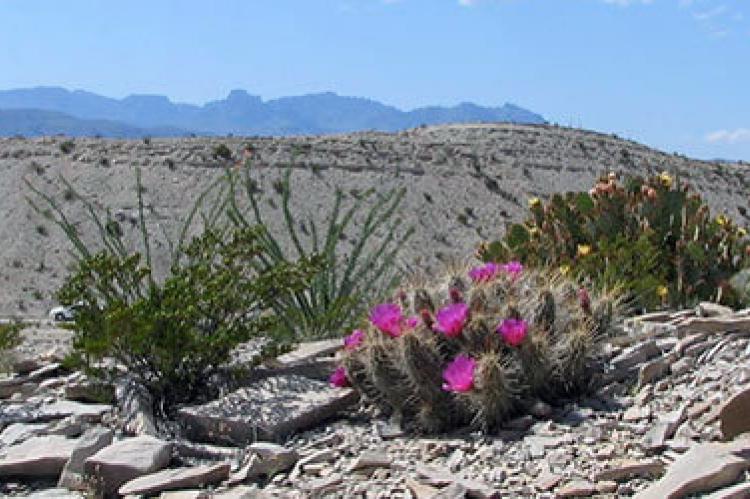Mapimí Biosphere Reserve: A Desert Sanctuary in Northern Mexico
Located in the northern Mexican state of Durango, the Mapimí Biosphere Reserve is a testament to the region's unique desert ecosystems and incredible biodiversity. This protected area encompasses the Sierra de la Campana, the Laguna de las Palomas, and the Dunas de la Soledad.
Mapimí Biosphere Reserve: A Desert Sanctuary in Northern Mexico
Nestled in the heart of the northern Mexican state of Durango, the Mapimí Biosphere Reserve is a testament to the region's unique desert ecosystems and incredible biodiversity. This protected area, spanning a total area of 342,387 hectares (846,056 acres), encompasses three distinct core zones in the central portion of the Chihuahuan Desert: the Sierra de la Campana, the Laguna de las Palomas (a saline lagoon) and the Dunas de la Soledad, a captivating desert habitat.
Geographical Setting
The Bolsón de Mapimí
The Mapimí Biosphere Reserve is within the Bolsón de Mapimí, an internal drainage basin at 1,150 meters (3,770 feet) above sea level. This unique geographical feature plays a crucial role in shaping the reserve's fragile and highly adapted ecosystems, which range from warm deserts to semi-deserts.
A Mosaic of Desert Landscapes
Within the reserve's boundaries, visitors are treated to a mosaic of desert landscapes, including the dominant xerophyllus microphyllus scrubland, chaparral vegetation, and halophyte vegetation in the lower regions. This diverse array of plant communities forms an intricate tapestry, reflecting the area's adaptation to the harsh desert conditions.
Biodiversity Riches
Flora and Fauna Diversity
The Mapimí Biosphere Reserve is a haven for biodiversity, housing an impressive 403 plant species, including 39 species of cacti, scrubs, and desert grasslands. Several endemic species have been identified among the reserve's flora, including nine species from the Cactaceae family, one from the Cochlospermaceae family, and one from the Fouquieriaceae family.
Avian and Terrestrial Wildlife
The reserve's rich biodiversity extends beyond its plant life, with approximately 200 species of birds, five species of amphibians, 36 species of reptiles, and 28 species of mammals calling this desert sanctuary home. Notable animal species found within the reserve include the puma (Puma concolor), the mule deer (Odocoileus hemionus), the sandhill crane (Grus canadensis), and the kit fox (Vulpes macrotis).
Iconic and Endangered Species
Among the many remarkable species found in the Mapimí Biosphere Reserve are iconic and endangered species, such as the Bolson tortoise (Gopherus flavomarginatus), the Mexican fringe-toed lizard (Uma paraphygas), the mule deer (Odocoileus hemionus), the American badger (Taxidea taxus), the puma (Puma concolor), and the golden eagle (Aquila chrysaetos). The presence of these species highlights the reserve's significance as a critical habitat for the region's unique and threatened wildlife.
Human Presence and Sustainable Development
Local Communities and Economic Activities
Approximately 72,600 inhabitants (as of 1997) reside within the boundaries of the Mapimí Biosphere Reserve, primarily engaged in extensive cattle ranching, salt exploitation, and agriculture. These local communities, consisting mostly of ranchers and farmers, play a crucial role in the reserve's conservation and management efforts.
Collaborative Management
The administration and management of the Mapimí Biosphere Reserve involve a collaborative effort between different municipalities and states. The municipalities of Tlahualillo and Mapimí in Durango, Jiménez in Chihuahua, and Sierra Mojada in Coahuila all contribute to the oversight and protection of this invaluable natural resource.
Sustainable Practices and Ecotourism
Through initiatives that promote sustainable practices and responsible ecotourism, the Mapimí Biosphere Reserve aims to strike a balance between preserving its fragile desert ecosystems and supporting the livelihoods of local communities. By engaging these communities in conservation efforts and fostering a sense of environmental stewardship, the reserve can ensure the long-term protection of its unique biodiversity.
The Mapimí Biosphere Reserve is a shining example of Mexico's commitment to safeguarding its natural heritage. It offers visitors a remarkable opportunity to explore and appreciate the beauty and resilience of desert ecosystems while contributing to their conservation for future generations.
